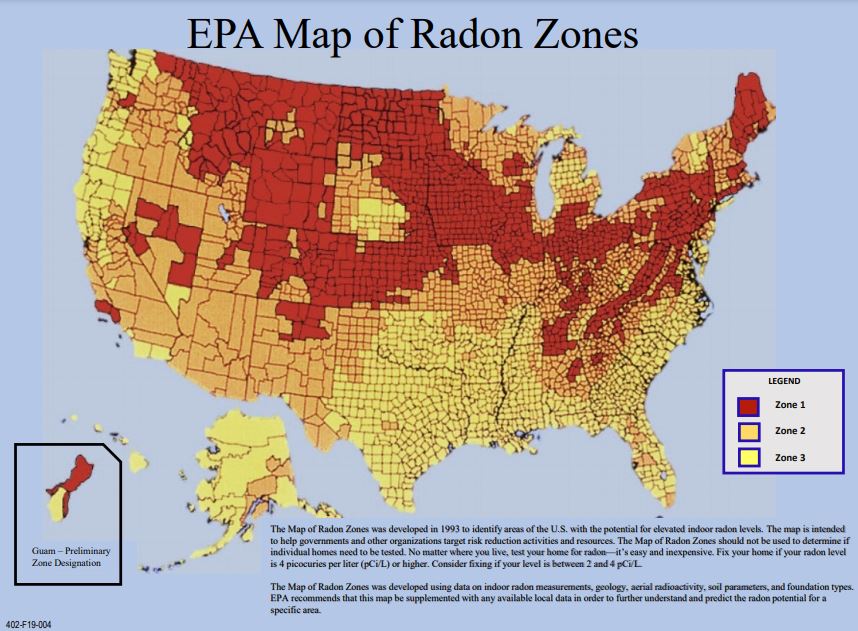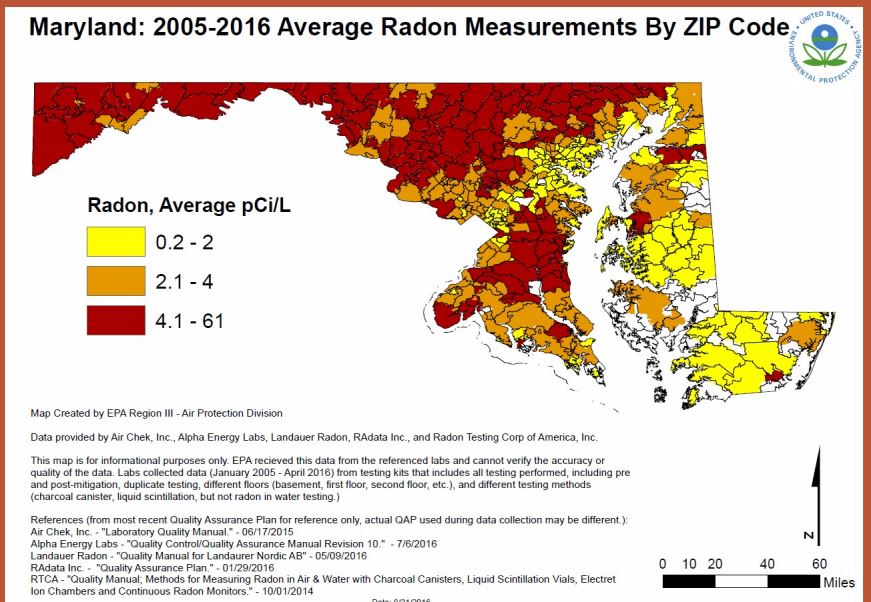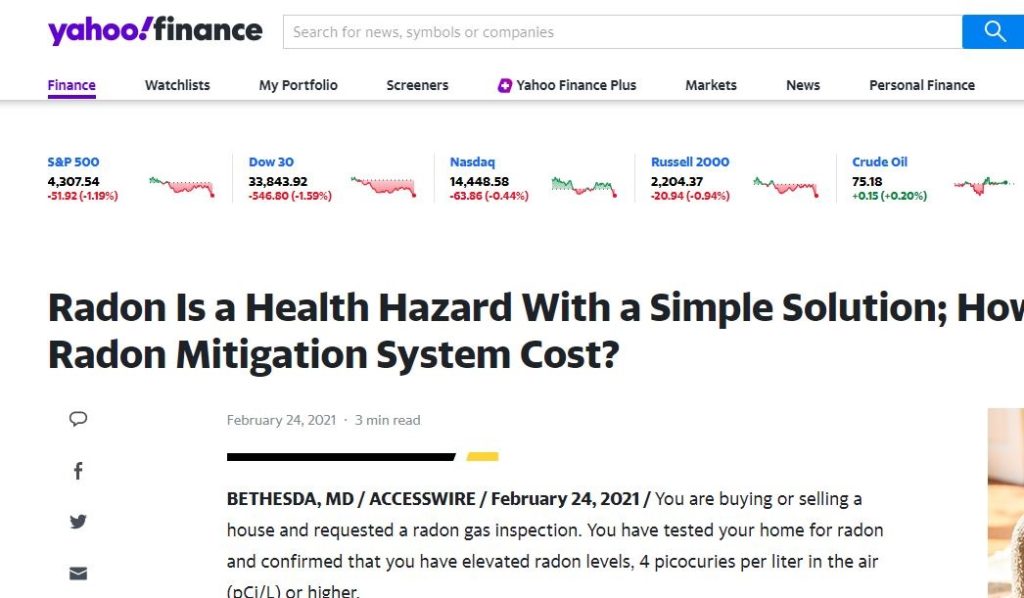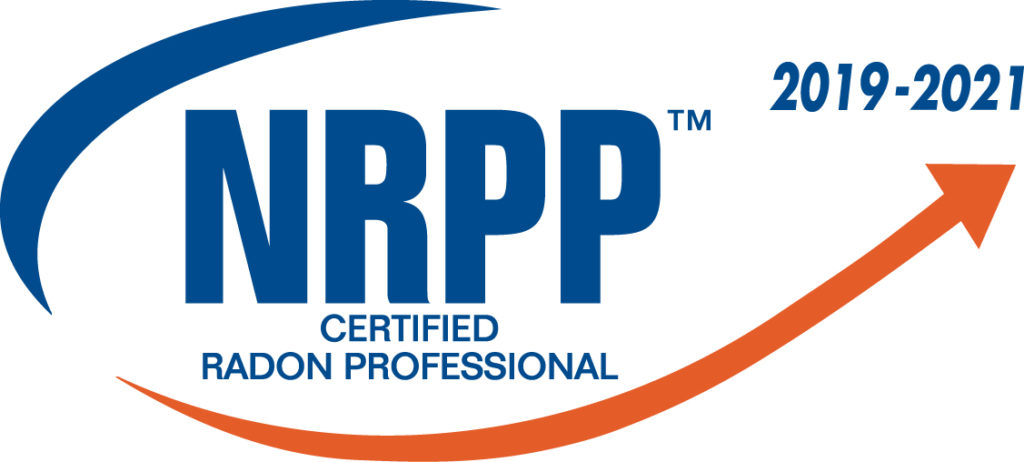Drain Tile Depressurization(DTD) or Sump Pump Radon Removal System.
The general principle of drain tile depressurization (DTD) is to draw radon-containing soil gas away from the house foundation. Some houses have a loop of perforated drain tile immediately beside the footing, either inside or outside the footing, for water drainage purpose.
In this article we will talk about DTD system with drain tiles which have been designed to direct the water to sump pump inside the basement, where the sump is capped , and the fan draws suction on the sump or drain tile network.
The primary mechanism by with DTD functions is to create a negative pressure in the drain tile or sump pump, under the concrete floor slab. If the gas pressure in the soil under/beside the foundation surface is negative relative to that inside the house, then flows through any openings through the foundation will consist of clean house air flowing outward through these openings, rather then soil gas flowing inward.
For the system to be effective, this DTD must be maintained at least near the major opening, radon entry routes. Good depressurization can be less crucial in central, uncracked regions of the slab where there are no entry routes for convective soil gas flow into the house.
A typical sump or DTD system is illustrated in the pic below. Suction is drawn on the drain tile network by connection a suction pipe to the sump/ drain tile system. While the suction pipe can be installed through the sump cover, it can be advisable instead to connect the suction pipe to the tile at a location remote from the sump. Installation of the suction pipe remote from the sump will reduce the suction loss that will result if air leaks develop around the sump cover.

Advantage of DTD vs SSD:
- the drain tile provided a network that helps distribute the suction under the slab and are located in a zone which will necessarily always have been excavated and backfilled during construction. Therefore generally have some communication, even under houses where little or no aggregate has been placed.
- Drain tiles are located right beside two of the major soil gas entry routes: the joint between the perimeter foundation wall and the concrete soil gas can enter the void network inside block foundation walls.











